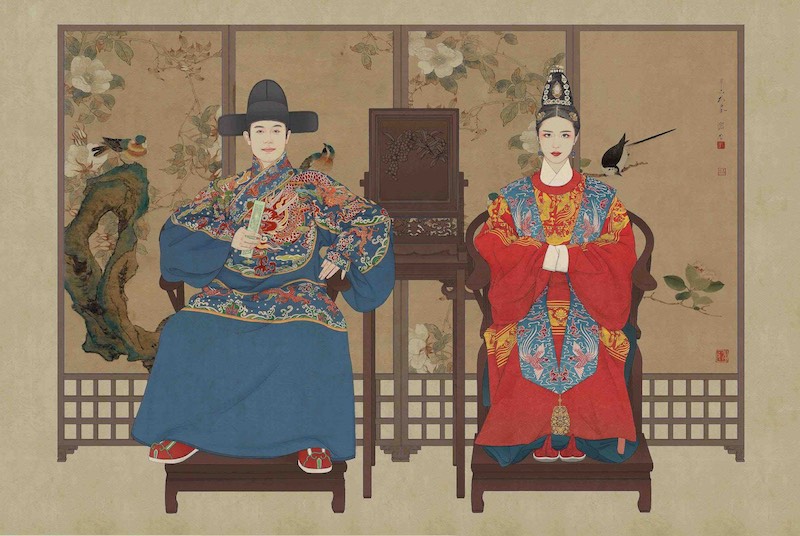
The Ming Dynasty was a Han majority regime. Zhu Yuanzhang and officials had been reforming in the Ming Dynasty clothing fashion since the overthrow of Yuan Dynasty.
According to the Ming History, Zhu Yuanzhang paid great attention to Ming Dynasty clothes. He had asked for the return of Ming Dynasty clothing to the Han Dynasty, but not exactly the same as the traditional Chinese clothing.
The purpose of clothing fashion reform was to promote Han culture and enhance the Han people’s sense of identity with the new regime.
Thus, the Ming formed a set of clothing fashions that belonged to the Ming Dynasty according to the customs of Han people and borrowed the costume designs of the Zhou, Han, Tang, and Song Dynasties.
Although the clothing fashion of Ming Dynasty is classified as Hanfu, there are some differences from the ancient Chinese clothing.
Characteristics of Ming Dynasty Clothing
There are many new changes in Ming Dynasty clothes, the most prominent feature being the replacement of the thousands of years old ribbon knots with buttons on the front lapels. The buttons are also more decorative in shape and color than in the Yuan Dynasty.
The second is the application of the pattern to the official uniform, which becomes an important marker for identifying the rank of an official.
Ming Dynasty clothes were extensively influenced by Cheng–Zhu school and featured a variety of patterns on clothing. Animals, plants, and even geometric patterns were recurring patterns on Ming Dynasty clothing.
Men’s clothing was characterized by square scarves and round collars, which were very similar to the robes worn by actors in the Peking Opera. Judging by the color of the clothing, the Ming Dynasty tends to be lighter in color.
During the Chongzhen emperor period, white dresses were very popular in the Ming Dynasty. Other than that, skirts and ruffles were prevalent. There are fine pleats and large pleats, and the skirt is decorated with an ornate pattern. The fabrics, colors, and styles used in the dresses are richer.
Causes and Consequences of Changes
The change in clothing fashion is due to advances in fabric and dyeing techniques. The textile industry was very developed, and the level of craftsmanship in clothing production surpassed that of the Yuan Dynasty.
More importantly, many textile centers were formed in the south, such as Songjiang, Hangzhou, Huzhou, and Ningbo, which were very well-known textile centers in the Ming Dynasty.
The fabrics produced in these areas provided a constant supply of raw materials for the production of clothing throughout the Ming Dynasty.
The development of the commodity economy in the middle and late Ming Dynasties led to the emergence of a new type of production in the textile industry in Suzhou, Hangzhou and other places, namely, the use of hired workers in the workshops, which marked the sprouts of capitalism production relations in ancient China.
In Conclusion
Denying some of the policies implemented by the previous dynasty and comprehensively promoting the Ming Dynasty’s clothing reform was one of Zhu Yuanzhang’s policies to consolidate the recently established dynasty.
In doing so, he could win the support of the Han people, who make up the vast majority of the society.
As the last Han feudal dynasty in ancient China, Ming Dynasty clothing returned to the bosom of Han. In terms of the research value of ancient Chinese costume history, the Ming is an unavoidable object of discussion when it comes to understanding ancient Chinese clothing.




